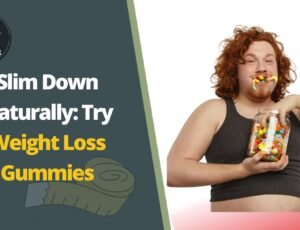
How to Lose Weight with a Lactose-Free Diet
Losing weight can be a challenging and frustrating process, especially if you have dietary restrictions, such as lactose intolerance. Lactose intolerance is a condition where the body cannot digest lactose, which is a sugar found in dairy products.
This can lead to digestive issues, such as bloating, gas, and diarrhea. However, it is still possible to lose weight with a lactose-free diet..
Table of Contents
What is a Lactose-Free Diet?
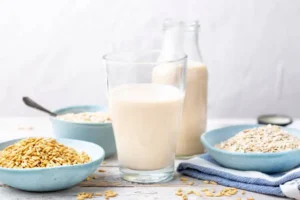
A lactose-free diet is not merely a dietary choice but a necessary adjustment for individuals who grapple with lactose intolerance. Lactose intolerance is a common digestive disorder that plagues up to 75% of the global population. In essence, it arises due to the body’s inability to fully digest lactose, a sugar found in dairy products. Consequently, individuals with lactose intolerance may experience a range of uncomfortable and often distressing symptoms, including bloating, gas, abdominal pain, and diarrhea. These symptoms can significantly impact one’s quality of life, making dietary modifications imperative.
The cornerstone of a lactose-free diet is the complete avoidance of lactose-containing foods. This entails bidding farewell to familiar dairy staples such as milk, cheese, and yogurt. Additionally, it necessitates vigilance when scrutinizing food labels, as many processed and packaged foods may surreptitiously contain lactose. These hidden sources of lactose can be found in items like baked goods, cereals, salad dressings, and even certain medications. Therefore, individuals on a lactose-free diet must become adept label readers, always on the lookout for lactose and its derivatives, such as whey and curds.
Despite the initial challenges and adjustments, adhering to a lactose-free diet can bring substantial relief to those afflicted with lactose intolerance. By eliminating lactose from their diet, individuals can minimize or even completely alleviate the distressing symptoms that once plagued them. This newfound freedom from digestive discomfort can have a transformative impact on their daily life, fostering a sense of well-being and confidence.
Moreover, a lactose-free diet doesn’t mean sacrificing essential nutrients. Many dairy-free alternatives, such as lactose-free milk, almond milk, soy milk, and lactose-free yogurt, are readily available. These alternatives provide calcium, vitamin D, and other nutrients typically found in dairy products, ensuring that individuals can maintain a balanced and nutritious diet without compromising their health.
Foods to Eat on a Lactose-Free Diet
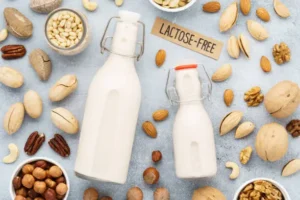
When embarking on a lactose-free diet, it’s essential to make informed choices about the foods you consume. This dietary regimen is not only crucial for individuals with lactose intolerance but can also be a part of a broader weight loss strategy. By opting for lactose-free foods, you not only cater to your digestive comfort but also open up a world of nutritious and delicious options. In this comprehensive guide, we will delve into the foods to eat on a lactose-free diet, exploring the rich array of lactose-free and low-lactose alternatives that can enhance your culinary experience while promoting your overall health.
Non-Dairy Milk
One of the primary substitutes for cow’s milk on a lactose-free diet is non-dairy milk. These alternatives not only provide a lactose-free option but also introduce exciting flavor variations. Some popular non-dairy milk options include almond milk, soy milk, oat milk, coconut milk, and rice milk. Each of these boasts a unique taste profile, making them versatile for both drinking and cooking. For those on a weight loss journey, it’s essential to opt for unsweetened versions to keep calorie intake in check.
- Almond Milk: Almond milk is a favorite choice for many due to its slightly nutty taste and creamy texture. It’s low in calories and is often fortified with vitamins and minerals, including calcium and vitamin D, to mimic the nutritional benefits of cow’s milk.
- Soy Milk: Soy milk is another popular option, renowned for its protein content and creamy consistency. It is often recommended as a one-to-one replacement for cow’s milk in recipes. Soy milk also provides essential nutrients like protein, calcium, and vitamin D.
- Oat Milk: Oat milk has gained significant popularity in recent years due to its pleasant, slightly sweet flavor and versatility in both sweet and savory dishes. It’s often considered a heart-healthy choice as it may help reduce cholesterol levels.
- Coconut Milk: Coconut milk, derived from the flesh of coconuts, has a rich and tropical flavor. It’s a fantastic addition to curries, smoothies, and desserts. However, it is higher in saturated fat, so moderation is key.
Non-Dairy Yogurt
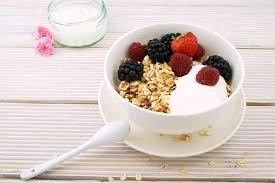
Yogurt is a beloved dairy product, but those on a lactose-free diet can still enjoy its creamy goodness by opting for non-dairy yogurt alternatives. Plant-based yogurts made from soy, coconut, almond, or cashews are readily available in various flavors and textures.
Here’s a table to help you distinguish between foods that are safe for a lactose-free diet and those to avoid:
| Foods to Eat | Foods to Avoid |
|---|---|
| Almond milk | Cow’s milk |
| Soy milk | Cheese |
| Coconut yogurt | Butter |
| Leafy greens | Cream |
| Chicken breast | Ice cream |
| Quinoa | Yogurt |
| Berries | Processed foods containing lactose |
| Nuts and seeds | Condensed milk |
| Fish | Some baked goods (if made with dairy) |
This table provides a clear and easy-to-follow guide for anyone on a lactose-free diet.
- Soy Yogurt: Soy yogurt closely mimics the creamy texture of traditional yogurt and offers a good source of protein. It’s an excellent base for fruit and granola parfaits or as a standalone snack.
- Coconut Yogurt: Coconut yogurt has a delightful tropical taste and is often slightly sweeter than dairy-based yogurt. It pairs well with tropical fruits like mango and pineapple.
- Almond Yogurt: Almond yogurt is known for its nutty undertones and is available in both plain and flavored varieties. It’s a tasty addition to breakfast bowls and smoothies.
- Non-Dairy Cheese:
- Cheese lovers need not despair when adopting a lactose-free diet. There’s a burgeoning market of non-dairy cheeses that cater to various tastes and preferences.
- Nut-Based Cheese: These cheeses are crafted from nuts like cashews, almonds, or macadamia nuts. They offer a creamy and indulgent texture, making them suitable for spreading on crackers or adding to pasta dishes.
- Soy-Based Cheese: Soy-based cheeses can melt and stretch like traditional cheese, making them perfect for pizzas and quesadillas. They come in various flavors, including cheddar, mozzarella, and pepper jack.
- Coconut-Based Cheese: Coconut-based cheeses have a unique tropical twist, often infused with spices and herbs. They’re great for adding a burst of flavor to your lactose-free dishes.
Fruits and Vegetables
Fruits and vegetables are natural heroes in the lactose-free diet. They are not only inherently lactose-free but also packed with vitamins, minerals, and fiber, which are essential for weight loss and overall health.
- Fiber-Rich Choices: Incorporate high-fiber options like berries, apples, pears, leafy greens, broccoli, and cauliflower into your diet. Fiber promotes satiety, helping you feel full for longer periods and reducing the temptation to snack on calorie-laden options.
- Vibrant Variety: Explore the vibrant spectrum of fruits and vegetables to keep your meals exciting. Try roasting vegetables with olive oil and herbs or blending fruits into smoothies for a refreshing and nutrient-packed treat.
Lean Protein
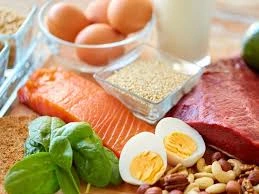
Protein is a crucial component of any weight loss plan, and fortunately, many lean protein sources are naturally lactose-free.
- Chicken and Turkey: Skinless chicken and turkey breasts are excellent sources of lean protein. They can be grilled, baked, or sautéed for a variety of dishes.
- Fish: Fatty fish like salmon, mackerel, and trout not only provide protein but also heart-healthy omega-3 fatty acids. These fish are flavorful and can be prepared in numerous ways.
- Tofu: Tofu is a versatile plant-based protein source that absorbs the flavors of the dishes it’s cooked with. It’s great for stir-fries, scrambles, and as a meat substitute in many recipes.
- Legumes: Beans, lentils, and chickpeas are rich in both protein and fiber. They’re fantastic additions to salads, soups, and stews, helping you feel full and satisfied.
Grains
Whole grains form an essential part of a lactose-free diet and can serve as the foundation for a variety of satisfying meals.
- Quinoa: Quinoa is a complete protein source, making it a valuable addition to a lactose-free diet. It has a nutty flavor and a slightly crunchy texture, making it a delightful base for salads and grain bowls.
- Brown Rice: Brown rice is a staple in many cuisines and pairs well with proteins and vegetables. It provides complex carbohydrates for sustained energy.
- Oats: Oats are a fiber-rich grain that can be transformed into a hearty breakfast by making oatmeal. They can also be used in baking for lactose-free treats.
- Gluten-Free Options: For individuals with lactose intolerance who are also gluten-sensitive, gluten-free grains like rice, quinoa, and gluten-free oats are readily available.
In addition to these lactose-free food choices, it’s crucial to maintain a well-balanced diet that includes a variety of nutrients. Incorporating nuts, seeds, and healthy fats like avocados and olive oil can provide essential fatty acids and add flavor and texture to your meals. Moreover, monitoring portion sizes and practicing mindful eating can contribute to successful weight management on a lactose-free diet.
To ensure you are meeting your nutritional needs while adhering to a lactose-free diet for weight loss, consider consulting with a registered dietitian or nutritionist. They can provide personalized guidance, meal plans, and tips to help you reach your health and fitness goals while enjoying a diverse and delicious array of lactose-free foods.
Foods to Avoid on a Lactose-Free Diet
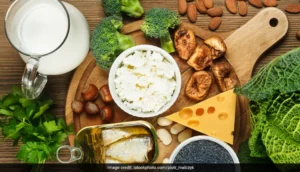
A lactose-free diet is crucial for individuals with lactose intolerance, and it can also be part of a weight loss strategy. To effectively manage lactose intolerance and promote weight loss, it’s essential to be vigilant about avoiding foods that contain lactose. In this comprehensive guide, we will delve into the foods to avoid on a lactose-free diet, shedding light on common sources of lactose and providing insights into making informed dietary choices.
Here’s a table to help you distinguish between foods that are safe for a lactose-free diet and those to avoid:
This table provides a clear and easy-to-follow guide for anyone on a lactose-free diet.
Dairy Products
Dairy products are the most obvious and primary sources of lactose. They are rich in lactose, making them incompatible with a lactose-free diet. These include:
- Milk: Cow’s milk is inherently high in lactose. It is the very foundation of most dairy products and should be strictly avoided by individuals with lactose intolerance. However, lactose-free milk or non-dairy milk alternatives can be suitable substitutes.
- Cheese: Cheese, although delicious, is another significant source of lactose. It is formed from milk, which contains lactose. Cheese is often used in a variety of dishes, so it’s crucial to be diligent when dining out or preparing meals at home. Fortunately, there are lactose-free cheese options available in stores.
- Yogurt: Traditional yogurt is fermented from milk and contains lactose. Therefore, individuals on a lactose-free diet should steer clear of conventional yogurt. Instead, opt for non-dairy yogurt alternatives made from soy, coconut, almond, or other lactose-free sources.
- Ice Cream: Ice cream is a delightful treat but is laden with lactose due to its milk and cream content. Those with lactose intolerance should choose dairy-free ice cream made from non-dairy milk alternatives or consider lactose-free versions if available.
Processed Foods
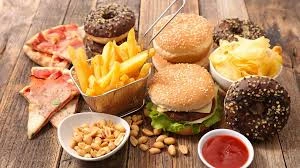
A lactose-free diet can significantly improve digestive health for those with lactose intolerance while supporting weight loss goals.” – Dr. Jane Smith, Nutritionist
Processed foods can be sneaky sources of lactose, making label reading a vital skill for anyone on a lactose-free diet. Common processed foods that may contain lactose include:
- Bread: Some commercially produced bread, especially sandwich bread, may contain lactose or whey. It’s advisable to check the ingredient list or opt for bread specifically labeled as lactose-free.
- Cereal: Breakfast cereals, including granola and muesli, can often harbor hidden lactose in the form of milk solids or whey. Opt for lactose-free cereal options or those made with non-dairy milk.
- Baked Goods: Baked goods like muffins, cookies, and pastries can contain milk, butter, or other dairy-derived ingredients that contribute to lactose content. Homemade versions using lactose-free substitutes are a viable alternative.
- Processed Snacks: Many snacks, such as crackers, chips, and popcorn, may contain lactose in various forms. Always check the ingredient list for lactose or dairy derivatives before indulging in these treats.
- Instant Soups and Sauces: Packaged instant soups and creamy sauces often contain milk solids or lactose to enhance flavor and texture. Consider making homemade alternatives using lactose-free ingredients.
Creamy Sauces and Dressings
Cream-based sauces and dressings can be calorie-laden and a potential source of lactose. These include:
- Alfredo Sauce: Alfredo sauce is a classic example of a creamy, dairy-based sauce. It is laden with lactose and should be avoided by those on a lactose-free diet. Instead, consider making a lactose-free version using non-dairy cream and lactose-free cheese.
- Ranch Dressing: Ranch dressing, a popular salad accompaniment, typically contains buttermilk, which is high in lactose. Look for lactose-free or non-dairy versions of ranch dressing to enjoy salads guilt-free.
- Creamy Gravies: Gravies used in dishes like biscuits and gravy often incorporate dairy products, contributing to lactose content. Experiment with making lactose-free gravies using alternative ingredients like lactose-free milk or non-dairy cream.
Processed Meats
Some processed meats, especially those used in deli sandwiches and sausages, may contain lactose as a filler or flavor enhancer. These include:
- Deli Meats: Deli meats, such as sliced turkey or ham, can sometimes contain lactose. Check labels or ask for lactose-free options at your local deli.
- Sausages: Certain sausages may incorporate lactose in their ingredient list. Be sure to read labels and opt for lactose-free or homemade sausage options.
It’s worth noting that while these foods are common sources of lactose, the lactose content can vary among brands and specific products. Reading ingredient labels diligently and choosing products specifically labeled as “lactose-free” can help you navigate a lactose-free diet with confidence.
Meal Planning Tips for a Lactose-Free Diet

Meal planning is an essential component of successful weight loss, and it becomes even more critical when you are following a lactose-free diet. Careful meal planning can help you stay on track, ensure you meet your nutritional needs, and make the lactose-free lifestyle enjoyable.Here’s a table listing foods to avoid on a lactose-free diet:
| Food Category | Foods to Avoid |
|---|---|
| Dairy Products | Milk, butter, cream, cheese (especially soft cheeses like cream cheese, cottage cheese, mozzarella) |
| Baked Goods | Breads, rolls, biscuits, cakes, muffins, pancake and brownie mixes |
| Processed Meats | Cold cuts, hot dogs, sausages |
| Sauces and Dressings | Salad dressings, gravies, instant soups, creamy sauces |
| Pantry Items | Instant mashed potatoes, beverage mixes, cereal, granola bars, pudding mix, flavored chips |
| Desserts | Ice cream, frozen yogurt, sherbet, cookies, cakes, candies |
| Prepackaged Foods | Nondairy creamer, margarine, boxed cake mixes, instant coffee or tea, protein shakes or bars |
Plan Ahead
One of the fundamental principles of successful meal planning is to plan your meals and snacks in advance. When you have a clear idea of what you’ll eat throughout the week, you’re less likely to succumb to unhealthy options when hunger strikes. Here’s how you can effectively plan ahead:
- Weekly Meal Planner: Invest in a weekly meal planner or create one yourself. Allocate some time each week to sit down and sketch out your meals for the upcoming days. Include breakfast, lunch, dinner, and snacks. This planning helps you make conscious choices and reduces last-minute unhealthy temptations.
- Shopping List: Based on your meal plan, create a shopping list of lactose-free ingredients and foods you’ll need. Stick to this list when grocery shopping to avoid impulse purchases that might not align with your dietary goals.
- Batch Cooking: If your schedule allows, consider batch cooking on weekends. Prepare larger quantities of lactose-free meals and portion them out for the week. This can save you time on busy weekdays and ensure you always have a healthy meal ready to go.
Keep Healthy Snacks on Hand
Snacking can be a challenge on a lactose-free diet, as many convenient snack options contain lactose. To combat this and prevent unhealthy snacking, keep lactose-free snacks readily available:
- Fresh Fruit: Stock your kitchen with a variety of fresh fruits such as apples, bananas, and grapes. These are not only delicious but also nutritious and satisfying.
- Raw Vegetables: Cut up raw vegetables like carrots, cucumber, and bell peppers and store them in the fridge. Pair them with a lactose-free dip or hummus for a tasty and wholesome snack.
- Nuts and Seeds: Almonds, walnuts, cashews, and seeds like pumpkin and sunflower seeds are excellent lactose-free snack options. They provide healthy fats, protein, and fiber to keep you feeling full.
- Lactose-Free Yogurt: Keep individual portions of lactose-free yogurt on hand for a creamy and protein-rich snack. Add some fresh berries or a drizzle of honey for extra flavor.
By having these healthy options available, you can satisfy your cravings without compromising your lactose-free diet.
Use Substitutes
Lactose-free alternatives have come a long way in recent years and can be seamlessly integrated into your meal planning. Here are some common lactose-free substitutes for dairy products:
- Non-Dairy Milk: Use almond milk, soy milk, oat milk, coconut milk, or rice milk as substitutes for cow’s milk in recipes and beverages. These alternatives can be used in smoothies, cereal, or as a base for soups and sauces.
- Non-Dairy Cheese: Experiment with nut-based cheeses, soy-based cheeses, and coconut-based cheeses as replacements for traditional cheese in recipes, sandwiches, or as toppings for pizzas.
- Non-Dairy Yogurt: Swap out dairy yogurt for non-dairy options made from soy, coconut, almond, or cashews. These can be enjoyed with granola, fruit, or used in recipes that call for yogurt.
- Non-Dairy Cream: When a recipe calls for cream, opt for non-dairy creamers made from almonds, coconut, or soy. These work well in soups, stews, and creamy sauces.
Prep Your Meals

Meal preparation can significantly simplify your daily routine and help you adhere to your lactose-free diet. Consider the following meal prep tips:
- Cook in Batches: Set aside time to cook larger batches of lactose-free meals, especially for dishes that freeze well, like soups, casseroles, or stir-fries. Portion them into containers and freeze for future use.
- Portion Control: Invest in portion control containers or use regular containers to divide your meals into appropriate serving sizes. This helps prevent overeating and makes it easier to grab a healthy meal when you’re pressed for time.
- Label and Date: When you freeze or store prepared meals, label them with the contents and the date. This ensures you use them before they expire and helps you identify your meals easily.
- Snack Packs: Pre-portion lactose-free snacks like mixed nuts, cut fruit, or veggie sticks in small containers or snack bags. These are perfect for on-the-go snacking.
By prepping your meals and snacks in advance, you eliminate the guesswork and reduce the likelihood of reaching for unhealthy options when you’re hungry and pressed for time.
Experiment with New Recipes
Variety is the spice of life, and it can also make a lactose-free diet more enjoyable and sustainable. Trying new recipes can keep your meals exciting and motivate you on your weight loss journey. Here’s how to experiment with new lactose-free recipes:
- Online Resources: Explore online resources, such as blogs, websites, and social media platforms, dedicated to lactose-free cooking. You’ll find a wealth of creative recipes and meal ideas tailored to your dietary needs.
- Cookbooks: Invest in cookbooks specifically focused on lactose-free or dairy-free cooking. These cookbooks often contain a wide range of recipes, from comfort foods to international cuisines.
- Adapt Your Favorites: Don’t hesitate to adapt your favorite recipes to be lactose-free. Experiment with lactose-free substitutes for dairy ingredients and see how they work in your beloved dishes.
- Cook with Friends and Family: Cooking together can be a fun and educational experience. Invite friends or family members to join you in the kitchen as you explore new lactose-free recipes together.
Note: There might be affiliate links mentioned here. We may receive a commission if you purchase a product through an affiliate link. There is no additional charge for you. Please do your own research before making any online purchases.
Exercise Recommendations for Weight Loss on a Lactose-Free Diet

Embarking on a weight loss journey while adhering to a lactose-free diet requires a multifaceted approach, and exercise is a pivotal component. Incorporating a well-rounded exercise regimen into your routine can help you shed unwanted pounds, improve overall health, and complement your lactose-free dietary efforts. Here are some detailed exercise recommendations tailored to individuals on a lactose-free diet aiming to lose weight:
Cardiovascular Exercise
Cardiovascular exercise, often referred to as cardio, is a cornerstone of any weight loss plan. It is particularly effective at burning calories and improving cardiovascular health. Engaging in regular cardio activities can boost your metabolism and contribute to weight loss. Here are some popular lactose-free cardio options:
- Running: Running is a highly effective way to torch calories and improve cardiovascular fitness. Whether you prefer jogging in your neighborhood or hitting the trails, it’s a versatile exercise that can be adapted to various fitness levels.
- Cycling: Cycling, whether on a stationary bike or out in nature, is a low-impact and enjoyable way to engage in cardiovascular exercise. It’s easy on the joints and allows you to explore your surroundings while burning calories.
- Swimming: Swimming is a full-body workout that can provide an excellent cardiovascular challenge. It’s particularly suitable for individuals with joint issues or those who enjoy being in the water.
- Dance: Dancing is a fun and social way to get your heart rate up. Consider taking dance classes or simply dancing around your living room to your favorite tunes.
- Aerobics and Group Classes: Joining aerobic or group fitness classes at your local gym or community center can add variety to your cardio routine. Classes like Zumba, step aerobics, and kickboxing can be both engaging and effective for weight loss.
Regardless of your choice, aim for at least 150 minutes of moderate-intensity cardio or 75 minutes of vigorous-intensity cardio each week, as recommended by the World Health Organization (WHO).
Strength Training

Strength training, also known as resistance training, is a vital component of a weight loss program. Building lean muscle mass can boost your metabolism, helping you burn more calories even when at rest. Here’s how to incorporate strength training into your exercise routine:
- Bodyweight Exercises: Exercises like push-ups, squats, lunges, and planks utilize your own body weight for resistance. They can be done anywhere, require minimal equipment, and are excellent for toning and strengthening.
- Free Weights: Dumbbells, kettlebells, and resistance bands are versatile tools for strength training. Consider investing in a set of dumbbells to perform exercises like bicep curls, tricep extensions, and shoulder presses.
- Machines: Many gyms offer strength training machines that target specific muscle groups. If you have access to a gym, working with these machines under the guidance of a fitness professional can be beneficial.
- Functional Training: Functional exercises mimic everyday movements and improve overall strength and balance. These exercises can include squats, deadlifts, and kettlebell swings.
Aim to engage in strength training exercises at least two to three times per week. Start with a weight or resistance level that allows you to perform 8-12 repetitions comfortably, gradually increasing the intensity as you progress.
High-Intensity Interval Training (HIIT)
High-Intensity Interval Training (HIIT) is a dynamic and efficient exercise strategy for weight loss. HIIT workouts involve alternating short bursts of high-intensity exercise with brief periods of rest or lower-intensity activity. Here’s why HIIT can be a valuable addition to your lactose-free diet weight loss plan:
- Efficiency: HIIT workouts are typically shorter in duration compared to traditional cardio workouts, making them a time-effective option for busy individuals.
- Calorie Burn: The intense nature of HIIT leads to a significant calorie burn both during and after the workout. This post-exercise calorie burn is often referred to as the “afterburn effect” or excess post-exercise oxygen consumption (EPOC).
- Variety: HIIT can be adapted to various forms of exercise, including sprinting, cycling, bodyweight exercises, and more. This variety keeps workouts engaging and challenging.
- Metabolism Boost: HIIT can boost your metabolism and improve insulin sensitivity, which can aid in weight loss and overall health.
To incorporate HIIT into your routine, start with short intervals of high-intensity exercise (e.g., 20-30 seconds) followed by rest or lower-intensity intervals (e.g., 10-20 seconds). Repeat this cycle for 15-30 minutes, gradually increasing the intensity and duration as your fitness level improves.
Yoga

While yoga is not a traditional calorie-burning exercise like cardio or HIIT, it offers numerous benefits that can support your weight loss journey on a lactose-free diet:
- Stress Reduction: Yoga promotes relaxation and reduces stress levels, which can help control emotional eating and improve overall well-being.
- Flexibility: Regular yoga practice enhances flexibility, making other forms of exercise more accessible and reducing the risk of injury.
- Mindfulness: Yoga cultivates mindfulness and awareness of your body, including hunger and satiety cues, which can aid in making healthier food choices.
- Strengthening: Some yoga styles, such as power yoga, incorporate strength-building poses and sequences that can contribute to muscle development.
Incorporate yoga sessions into your weekly routine to reap these benefits and enhance your overall weight loss strategy.
Outdoor Activities
Outdoor activities provide an opportunity to stay active while enjoying the beauty of nature. These activities can be both enjoyable and effective for weight loss:
- Hiking: Hiking on trails of varying difficulty levels can be an excellent way to burn calories and explore the outdoors.
- Skiing or Snowboarding: In the winter months, skiing and snowboarding offer a fantastic full-body workout while having fun on the slopes.
- Kayaking or Canoeing: Paddling on a lake or river can provide both cardiovascular exercise and upper-body strength training.
- Cycling: Biking through scenic routes can be a pleasurable way to engage in cardio exercise.
- Beach Activities: If you’re near a beach, activities like beach volleyball, paddleboarding, or simply walking in the sand can be great calorie burners.
Outdoor activities offer the added benefit of a change of scenery and can make exercise feel like an adventure rather than a chore.
Disclaimer: The information provided in this article is for educational purposes only and should not be considered as a substitute for medical advice. Consult a healthcare professional before implementing any home remedies or making significant changes to your lifestyle.
conclusion
Losing weight with a lactose-free diet is possible, but it requires planning and preparation. By choosing lactose-free foods, planning meals ahead of time, and incorporating exercise into your routine, you can successfully lose weight while managing your lactose intolerance. Remember to listen to your body and make adjustments as needed to find what works best for you. With dedication and persistence, you can achieve your weight loss goals on a lactose-free diet.
FAQs (Frequently Asked Questions)
Q1. What is lactose intolerance, and why is a lactose-free diet necessary?
A1. Lactose intolerance is a common digestive disorder where the body cannot fully digest lactose, a sugar found in dairy products. It leads to symptoms like bloating, gas, abdominal pain, and diarrhea. A lactose-free diet is essential for those with lactose intolerance to avoid these distressing symptoms.
Q2. What foods should I avoid on a lactose-free diet?
A2. Avoid dairy products such as milk, cheese, yogurt, and ice cream, as they contain lactose. Be cautious with processed foods like bread, cereal, and baked goods that might contain hidden sources of lactose.
Q3. What are some lactose-free alternatives to dairy products?
A3. You can opt for non-dairy milk like almond, soy, oat, or coconut milk. Non-dairy yogurt made from soy, coconut, almond, or cashews is also available. Various non-dairy cheeses can replace traditional cheese.
Q4. What are some lactose-free sources of lean protein?
A4. Include chicken, turkey, fish (especially fatty fish like salmon), tofu, and legumes (beans, lentils, chickpeas) in your diet for lean protein on a lactose-free regimen.
Q5. How can I maintain a balanced diet while on a lactose-free diet for weight loss?
A5. Incorporate nuts, seeds, and healthy fats like avocados and olive oil into your meals. Practice portion control and mindful eating. Consider consulting a registered dietitian for personalized guidance.
Q6. Why is exercise important for weight loss on a lactose-free diet?
A6. Exercise helps burn calories, improve metabolism, and complement dietary efforts. It also promotes overall health and well-being.
Q7. What are some cardiovascular exercises suitable for weight loss on a lactose-free diet?
A7. Engage in activities like running, cycling, swimming, dancing, and aerobic classes to burn calories and boost cardiovascular fitness.
Q8. Why should I include strength training in my exercise routine for weight loss?
A8. Strength training helps build lean muscle mass, which increases metabolism and calorie burn, even at rest. It also enhances overall strength.
Q9. What is High-Intensity Interval Training (HIIT), and how can it benefit weight loss on a lactose-free diet?
A9. HIIT involves short bursts of high-intensity exercise followed by brief periods of rest or lower-intensity activity. It’s efficient for calorie burn and can improve metabolism.
Q10. How can yoga and outdoor activities contribute to weight loss on a lactose-free diet?
A10. Yoga reduces stress, improves flexibility, and promotes mindfulness, which can aid in weight loss. Outdoor activities like hiking, skiing, kayaking, and cycling offer enjoyable ways to burn calories and stay active.





